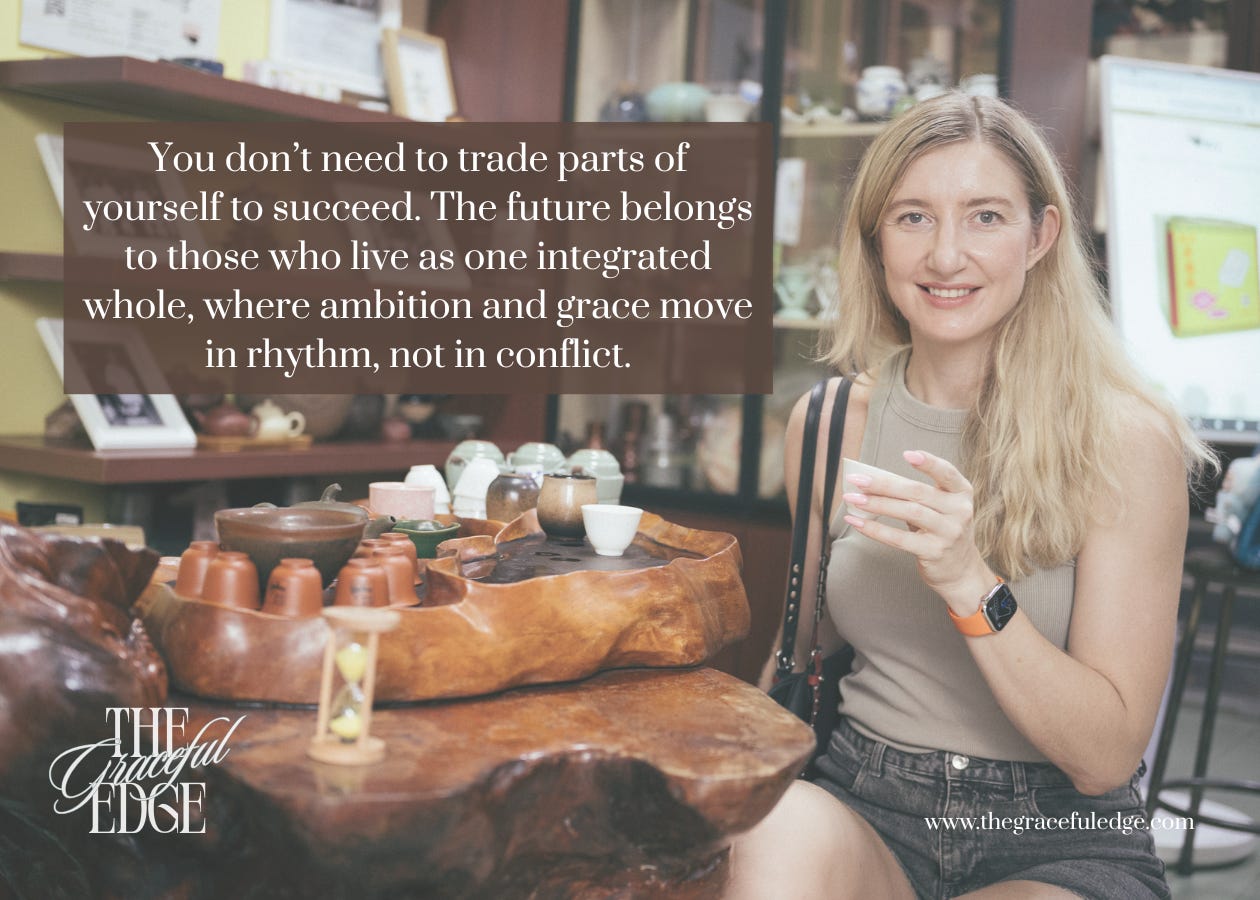The Myth of Trade-Offs
True success isn’t about balance or sacrifice, it’s about breaking the myth of trade-offs and learning to integrate ambition, love, and well-being into one whole, fulfilling life.
I’ve lost count of how many times people, especially women, have asked me, “How do you do it all?”
The tone varies — admiration, curiosity, sometimes disbelief, as if a woman can either be a global leader or a present mother, a loving partner or an ambitious professional, graceful or powerful.
We’ve been conditioned to believe that every choice comes with a cost, that success demands sacrifice, that the only way to win in one area is to compromise another. However I’ve come to see that this belief, the idea of trade-offs, is not truth. It’s conditioning. And it’s long overdue for an upgrade.
Because what if the entire idea of trade-offs was never designed for humans but for machines?
The Lie of the Linear Life
The notion of trade-offs comes from the industrial age — a world built on linearity, control, and efficiency. You could only put fuel in one place at a time. Add to one side, subtract from the other.
But human beings don’t run on fuel. We run on energy.
And energy doesn’t obey linear logic. It obeys emotional, spiritual, and biological laws.
When your life is fragmented, energy leaks, even if you’re doing less.
When your life is coherent, energy multiplies, even if you’re doing more.
Trade-offs aren’t the result of ambition. They’re the result of misalignment.
You don’t burn out because you have many roles. You burn out because those roles don’t speak to each other.
Rhythm Over Balance
The old model of success told us to “find balance.”
Balance sounds virtuous, but it’s actually exhausting.
It assumes that life is a static scale we must constantly adjust to stay centered. But that’s a masculine construct — symmetry, control, predictability.
The feminine system thrives on rhythm. There are seasons for intensity and seasons for rest. Moments when leadership takes the stage and moments when love does.
It’s not about balancing everything at once, it’s about moving with awareness between what’s needed now and what nourishes next.
As women, we are designed to live cyclically — emotionally, hormonally, spiritually. Rhythm is our nature. When we fight it, we fragment, but when we honor it, we expand.
Integration is the Real Edge
I used to think compartmentalization was a sign of discipline, that the “professional me” should look different from the “mother me” or the “dancer me.”
But living like that creates invisible tension. You start performing your roles instead of embodying them.
The real breakthrough came when I realized: integration is not indulgence — it’s efficiency.
When I dance, I’m not escaping work; I’m training presence.
When I pause for a Chinese tea ceremony, I’m not being idle; I’m rehearsing mindfulness.
When I parent my son, I’m not reducing my ambition; I’m deepening empathy.
Each role that I play feeds the others. That’s what energy synergy looks like.
That’s how you build a life that expands itself.
The Biology of Wholeness
Science now supports what ancient wisdom always knew: integration sharpens performance.
When we shift between contexts, from strategy meeting to creative flow, from leading teams to nurturing family, we activate different neural networks.
This kind of “cross-training” strengthens the brain’s adaptability, creativity, and emotional regulation.
So, the modern myth that being multi-dimensional makes you distracted is completely backward.
Being multi-dimensional makes you resilient.
The same applies to energy. Studies on oxytocin and mirror neurons show that connection, genuine, embodied presence, restores our nervous system faster than solitude.
In other words, wholeness isn’t just a phylosophical concept, it’s biological performance blueprint.
The Cost of Fragmentation
And yet, most people still live divided. One identity for LinkedIn, another for the office and another in the mirror at night.
We call it professionalism, but what it really is a disconnection.
Every time we shift masks, we lose energy. Every time we hide parts of ourselves to fit the room, our nervous system spends energy managing the split.
Over time, that’s what burns us out, not the workload, but the constant self-reconstruction.
Integration doesn’t mean doing everything all at once. It means being one person everywhere.
That’s the true definition of grace — consistency between your internal state and your external expression.
A Life That Amplifies Itself
When people ask how I manage it all — leadership, marriage, motherhood, health, writing, dance — the truth is, I don’t manage. I design.
I design for energy, not time, for coherence, not control.
Every element of my life, from early morning rituals to night-time writing, is part of one system that regenerates itself.
There are still moments of chaos, of course. But I don’t see chaos as a failure, to me it’s just a rhythm.
We don’t have to choose between ambition and serenity, between impact and intimacy. We just need to stop believing they’re opposites. Because they were never meant to compete. They were meant to coexist.
The Future Belongs to the Integrated
The future of leadership, and humanity, belongs to those who are whole.
Not perfectly balanced, but profoundly integrated.
The ones who can lead from boardroom to dinner table without changing masks.
The ones who understand that vitality, creativity, and love are not separate resources, but different frequencies of the same energy.
The most powerful human being is not the most optimized. It’s the most coherent.
If you found these insights valuable, please share this article with your network.
For more strategies on growth, leadership, and innovation, subscribe to my weekly letter, The Graceful Edge, where ambitious leaders gain a competitive advantage.


